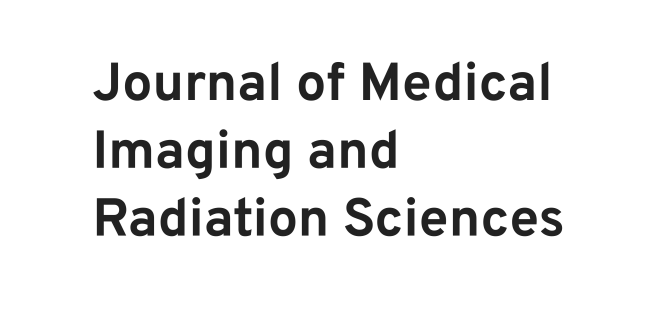Publications

Extravasation Reporting Pros and Cons
In 2020 the Health Physics Society (HPS) submitted a public comment, unsupported by science, to the Nuclear Regulatory Commission regarding the reporting of extravasations. In early 2022, the radiation protection journal, Health Physics, provided a forum for discussing the HPS public comment. Lucerno, patients, experts, and HPS members provided written responses to the HPS public comment.

Detection of Excess Presence of 99mTc-MDP Near Injection Site—A Case Report
“This case describes how detection of excess presence of 99mTc-MDP near the injection site enabled the technologist to apply mitigation tactics early in the uptake process. It also suggests that detecting an extravasation or stasis early in the injection process can be important for image interpretation and minimizing radiation dose to tissue.” Full Text

The Scientific and Clinical Case for Reviewing Diagnostic Radiopharmaceutical Extravasation Long-Standing Assumptions
“Our findings suggest that significant extravasations can or have caused patient harm and can irradiate patients’ tissue with doses that exceed medical event reporting limits and deterministic effect thresholds. Therefore, diagnostic radiopharmaceutical injections should be monitored, and dosimetry of extravasated tissue should be performed in certain cases where thresholds are thought to have been exceeded. Process improvement efforts should be implemented to reduce the frequency of extravasation in nuclear medicine.” Full Text

Patient-specific Extravasation Dosimetry Using Uptake Probe Measurements
“With patient radiation safety in mind, we maintain that both diagnostic and therapeutic extravasation events should be identified and characterized. Severe extravasations affect the diagnostic or therapeutic quality of nuclear medicine procedures, and the unintended dose to tissue and skin may eventually be clinically significant. A dedicated radiopharmaceutical injection monitoring system can be used to improve the accuracy of dosimetry and assist in determining the need for patient follow-up.” Full Text

Topical sensor metrics for 18F-FDG positron emission tomography dose extravasation
“Partial extravasation of a PET dose is readily detected and differentiated using TAC metrics and these metrics could provide deeper insight into the impact of partial extravasation on image quality or quantitation.” Full Text

Precision Prospectus: Limiting Variability in PET Interpretation
“Reproducible, quantitative standardized uptake value (SUV) results from FDG-PET scans are increasingly viewed as important in clinical oncology—both in routine clinical practice, as well as in clinical trials.” Full Text

Extravasation Reporting: The Scientific Case for Regulatory Change
“The studies in which I have been involved identified factors such as the tools used for the injection, the technique, and the experience of the technologist that influence the probability of extravasation, rather than any patient-specific factor.” Full Text

Detection of 18F-FDG Dose Leakage Using a Topical Device
“As part of routine monitoring of 18F-FDG PET administrations, an interesting case was identified that mimicked extravasation but represented dose leakage during infusion via an automatic injector. The Lara device provided a useful tool for more timely critical evaluation and problem solving, extending advantages to the patient and practice.” Full Text

Topical Sensor for the Assessment of Injection Quality for 18F-FDG, 68Ga-PSMA and 68Ga-DOTATATE Positron Emission Tomography
“Topical monitoring and characterization of PET dose administration is possible and practical with the LARA device. Extravasation and partial extravasation of PET doses are not only readily detected but they are also preventable. The LARA device can provide the insights into variables that could eliminate extravasation as a cause of image quality or SUV accuracy issues.” Full Text

Injection Integrity in 2020
“Infiltrations can be reduced. Using the techniques described, our 2 departments have shown a significant reduction in infiltration rates. Our main department, with a fixed-site PET/CT scanner, began with a 13.3% infiltration rate and reduced it to under 3% for 2 consecutive years and continues to improve. The mobile PET/CT department started with a 15.5% infiltration rate, reduced it to under 5%, and has maintained it there.” Full Text (subscription required).

Topical Sensor for the Assessment of Injection Quality for 18F-FDG, 68Ga-PSMA and 68Ga-DOTATATE Positron Emission Tomography
“Topical monitoring and characterisation of PET dose administration is possible and practical with the LARA device. Extravasation and partial extravasation of PET doses are not only readily detected but they are also preventable. The LARA device can provide the insights into variables that could eliminate extravasation as a cause of image quality or SUV accuracy issues.” Full Text

Assessing and Reducing Positron Emission Tomography/Computed Tomography Radiotracer Infiltrations: Lessons in Quality Improvement and Sustainability
“A QIP can significantly improve and sustain injection quality; however, ongoing monitoring is needed as new technologists join the team.” Full Text
